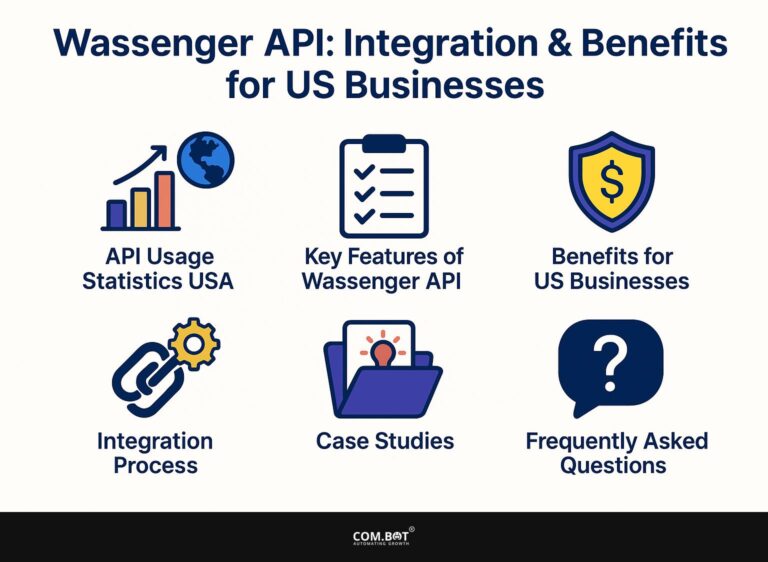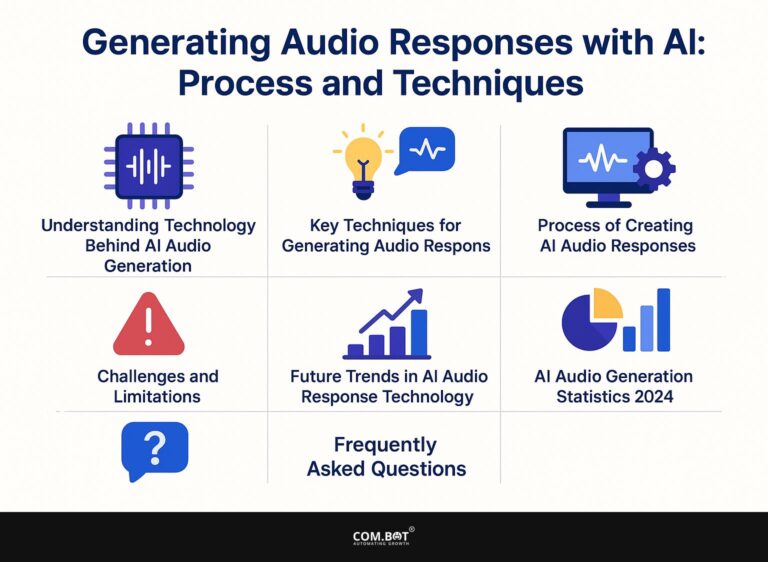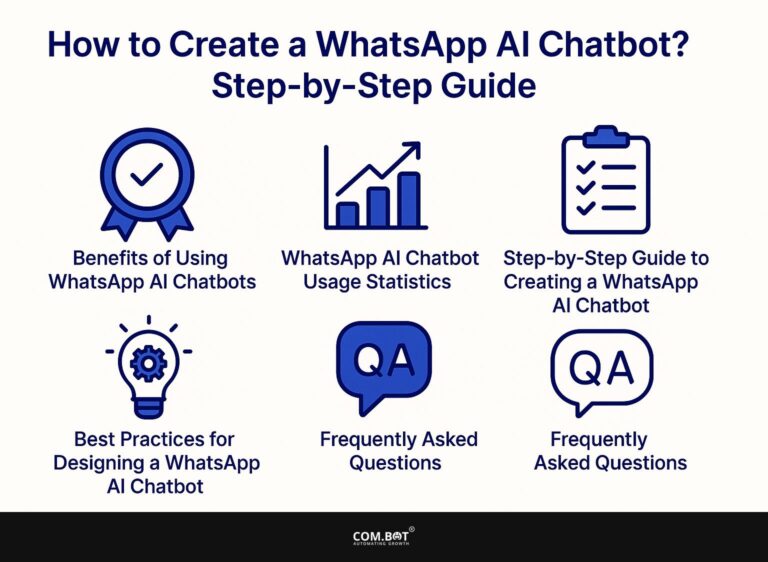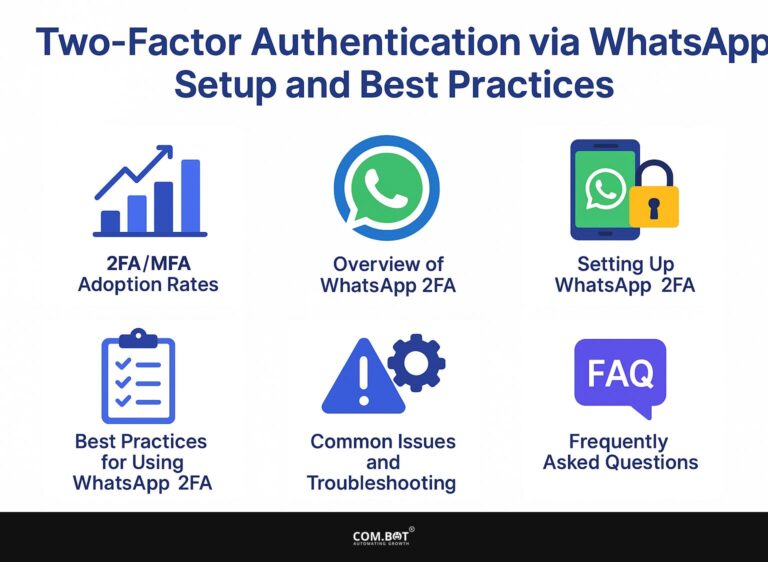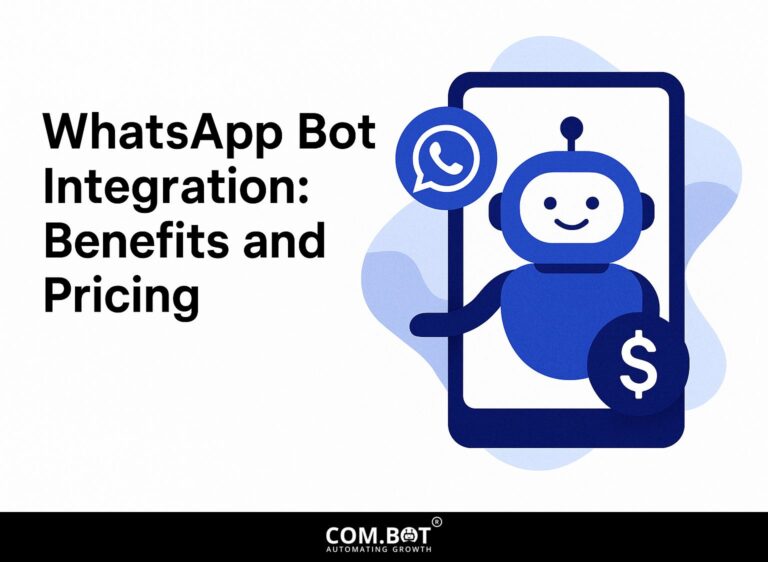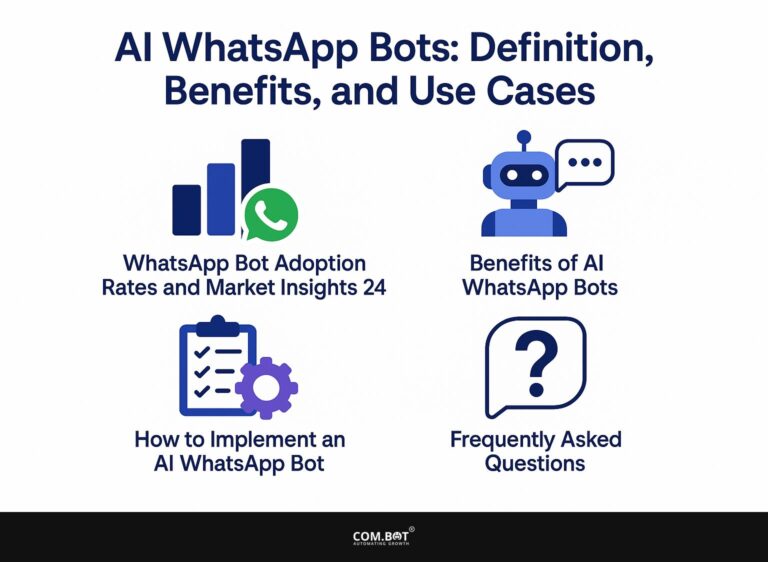Customer Service Bots on WhatsApp: Advantages and Scalability
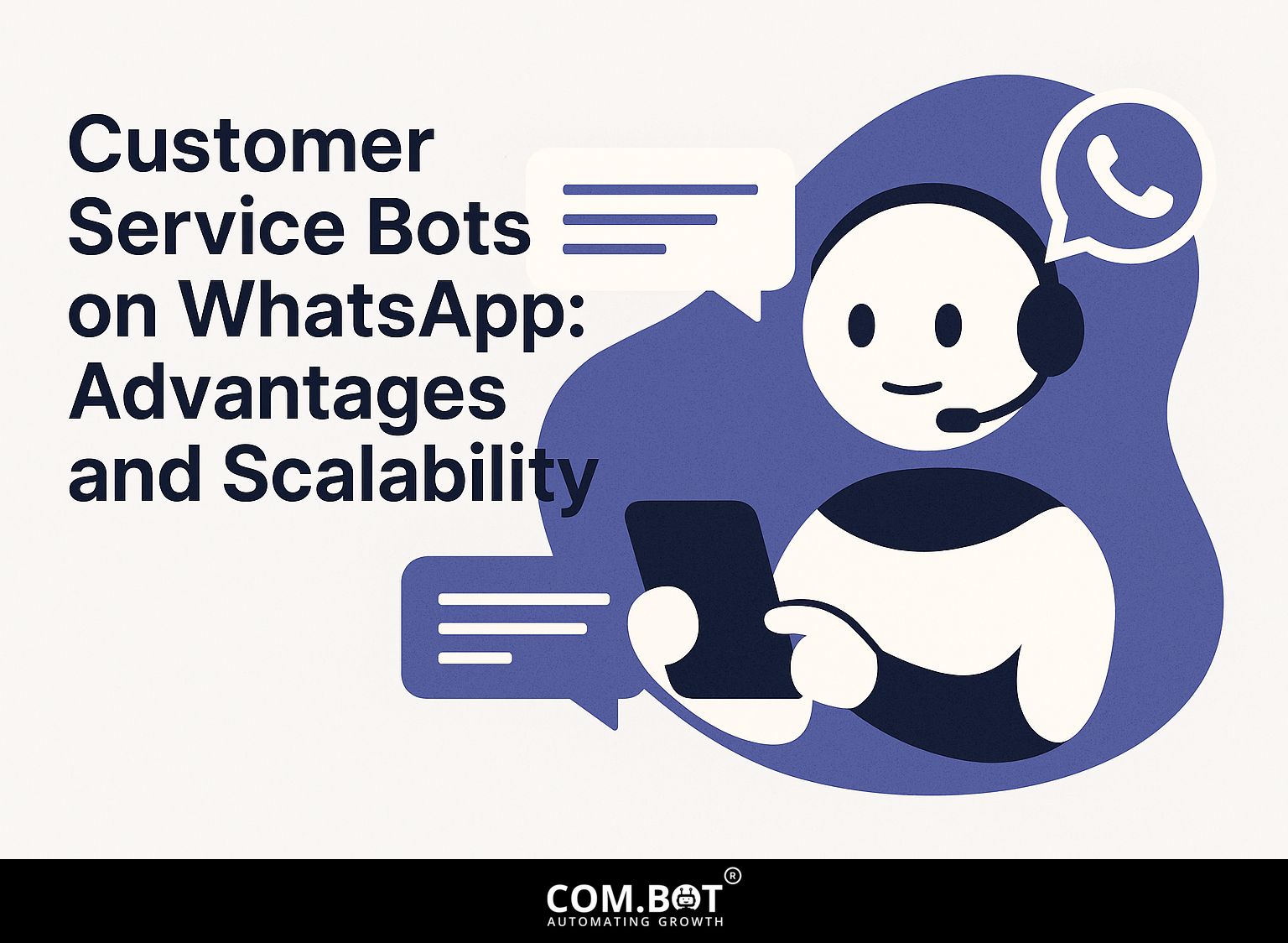
In today’s fast-paced world, WhatsApp automation is revolutionizing customer service by enhancing response time and user satisfaction. Companies like FastTrack Logistics and HealthPlus Clinics use these bots to improve customer experience, making support available through messages. This article discusses the benefits of using customer service bots on WhatsApp, focusing on how they can grow with demand and significantly change both businesses and customer experiences.
Key Takeaways:
- Customer service bots on WhatsApp provide 24/7 availability, cost efficiency, and improved response times for businesses.
- These bots can manage more tasks and connect with current systems, making them suitable for businesses of any size.
- To successfully implement this, businesses should prioritize creating easy-to-use interactions, ongoing learning and development, and keeping a personal element in the bot’s replies.
- 1 WhatsApp Business Statistics
- 2 Advantages of Using Bots on WhatsApp
- 3 Scalability of Customer Service Bots
- 4 Best Practices for Implementing Bots
- 5 Challenges and Considerations
- 6 Frequently Asked Questions
- 6.1 1. What are customer service bots on WhatsApp?
- 6.2 2. What are the advantages of using customer service bots on WhatsApp?
- 6.3 3. How do customer service bots on WhatsApp improve scalability?
- 6.4 4. Can customer service bots on WhatsApp handle complex customer interactions?
- 6.5 5. Are there any limitations to customer service bots on WhatsApp?
- 6.6 6. How can businesses integrate customer service bots on WhatsApp into their operations?
1. Definition and Purpose
Customer service bots are chatbots powered by AI that handle customer questions with automated answers, making users more satisfied and engaged. These bots make conversations easier by giving quick replies to common questions, like if a product is in stock or how returns work.
Platforms like Clickatell let businesses connect these bots with messaging apps like WhatsApp, allowing easy communication with customers directly in the apps they use.
For example, using Clickatell, a business can set up a bot that responds to inquiries 24/7, reducing wait times and freeing up human agents for complex issues. This method makes things work better and gives customers a better experience.
2. Overview of WhatsApp as a Platform
WhatsApp is an effective communication tool, with 98% of messages being read, which makes it ideal for customer service bots.
Along with high open rates, WhatsApp’s multimedia messaging supports images, videos, and voice notes, enhancing customer interactions and engagement.
Gourmet Delights Restaurant used WhatsApp to share daily menus and promotional deals, leading to a 30% rise in reservations. Companies can use WhatsApp groups for team work, like organizing shift schedules or quickly sharing news.
Businesses can use tools like Chatbot.com to answer frequent questions automatically, which simplifies communication and keeps customers satisfied.
WhatsApp Business Statistics
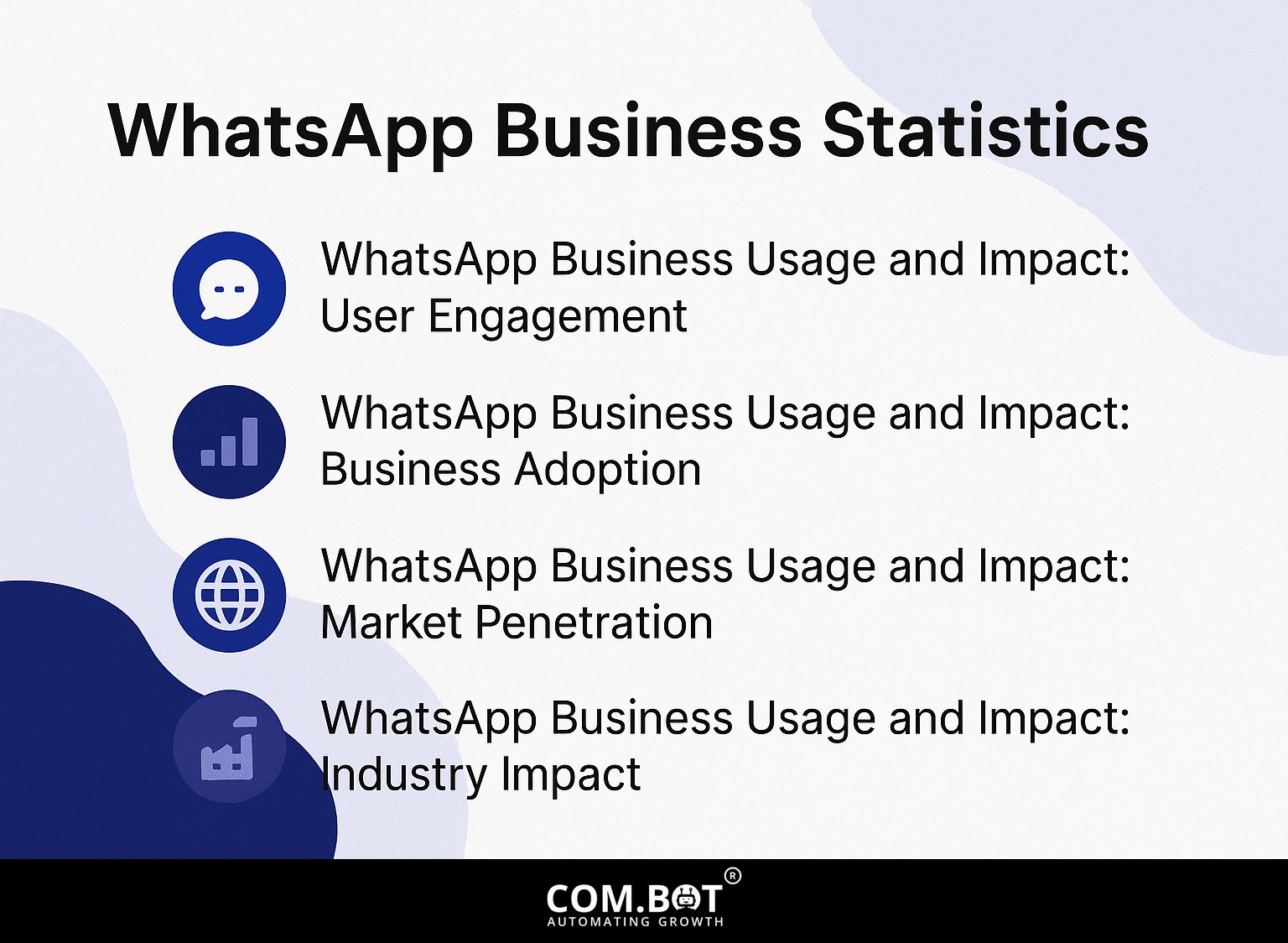
WhatsApp Business Usage and Impact: User Engagement
WhatsApp Business Usage and Impact: Business Adoption
WhatsApp Business Usage and Impact: Market Penetration
WhatsApp Business Usage and Impact: Industry Impact
The WhatsApp Business Statistics Data gives a detailed view of how the platform is used, its effects, and its reach in the market. It shows how important it is for current business communication and connecting with customers.
WhatsApp Business Usage and Impact is an important part for businesses using the platform to communicate with customers. The WhatsApp open rate is remarkably high at 98%, indicating that messages sent via WhatsApp are almost guaranteed to be read by recipients. This high engagement rate is a powerful tool for businesses aiming to reach customers effectively.
Moreover, 83% of consumers are willing to make purchases via messaging, illustrating the platform’s potential for driving sales. Additionally, 75% of consumers desire post-purchase support through WhatsApp Businesses should provide thorough customer support through this channel. The statistic that 68% of consumers trust WhatsApp for business messaging further solidifies the platform’s credibility and reliability in the eyes of users.
Business Adoption data shows that 5 million businesses are currently using the WhatsApp API. This widespread adoption highlights the platform’s effectiveness in facilitating business operations and customer interactions. Also, using chatbots on WhatsApp has caused a 30% reduction in support costs Showing how automated customer service can save time and reduce expenses.
Market Penetration statistics reveal the global reach of WhatsApp. In India, there are 487 million users, showcasing the platform’s massive user base in one of the world’s largest markets. In Brazil, 98.9% of users use WhatsApp, showing it is widely used by almost everyone. In Indonesia, with 73 million downloads, WhatsApp is also a prominent communication tool, reinforcing its widespread popularity in diverse regions.
Industry Impact is underscored by a 10% conversion rate through WhatsApp, highlighting the platform’s effectiveness in driving customer actions and sales. The projected spend on WhatsApp Business by 2025 is estimated to reach $3.6 billion This shows a strong commitment to the platform’s potential to improve business processes and interact with customers.
In summary, the WhatsApp Business Statistics data shows how important the platform is for digital communication today. With high user engagement rates, substantial business adoption, and significant market penetration, WhatsApp Business is a powerful tool for driving sales, enhancing customer support, and improving overall business efficiency.
Advantages of Using Bots on WhatsApp
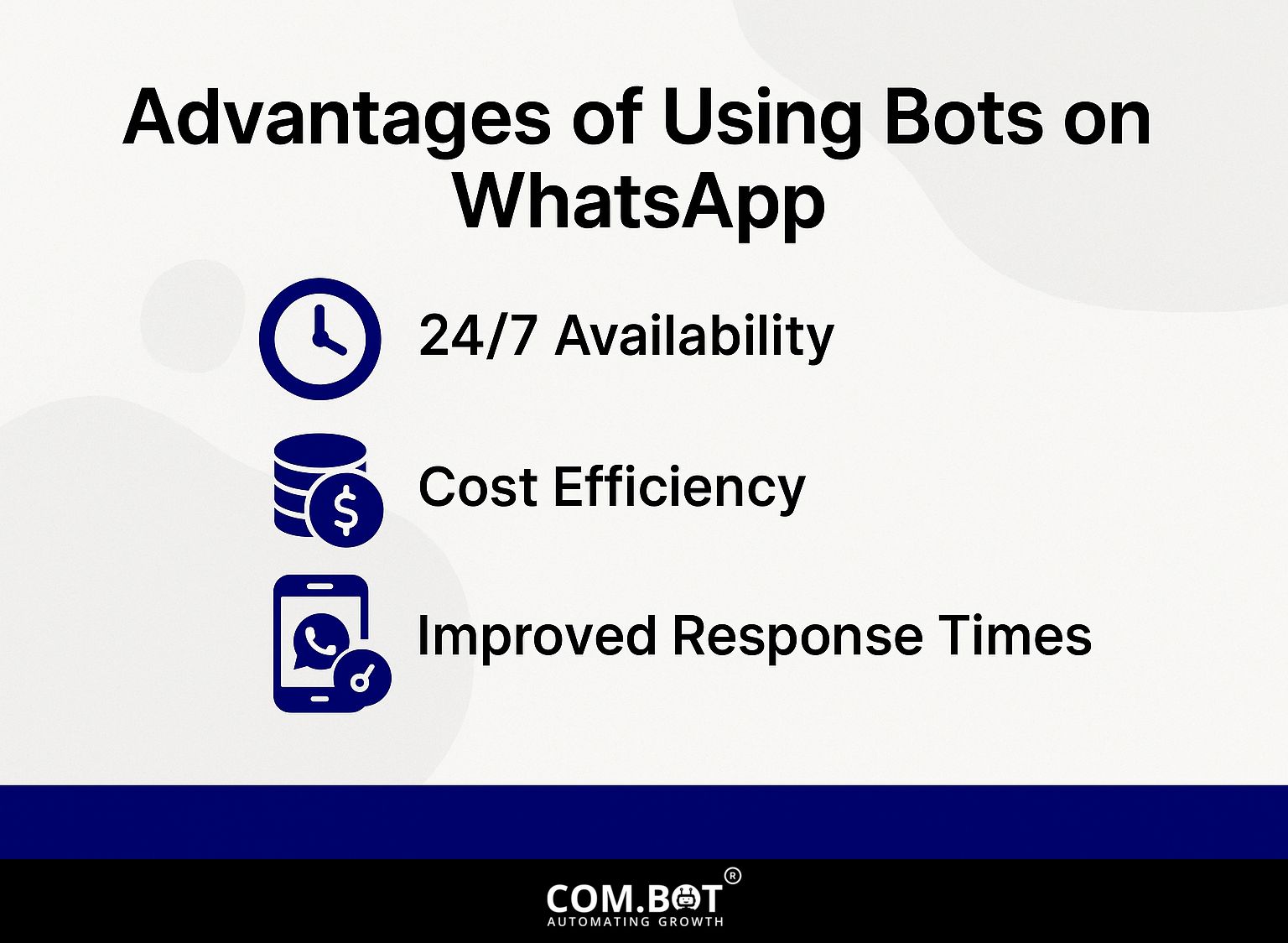
Using bots on WhatsApp offers clear benefits like round-the-clock service, saving money, and faster replies, greatly improving customer experience. If you’re interested in understanding these benefits in greater detail, you might explore more about AI WhatsApp Bots: Definition, Benefits, and Use Cases.
1. 24/7 Availability
WhatsApp bots enable businesses to provide round-the-clock customer service, ensuring inquiries are addressed regardless of time zones.
By using tools like WhatsApp Business API, businesses can set up automatic replies to common questions, such as shipping times or product availability.
For instance, FastTrack Logistics adopted such a bot and experienced a 35% increase in customer loyalty. They configured their bot to respond instantly to inquiries, significantly enhancing customer satisfaction.
They used analytics tools to enhance their interactions by concentrating on customer feedback, ensuring they offer quick and helpful assistance. This approach increased interaction and helped build trust with customers.
2. Cost Efficiency
Implementing customer service bots on WhatsApp can reduce operational costs by up to 30%, freeing resources for other critical business tasks.
Businesses can use tools like Clickatell to manage customer interactions more easily, reducing the need for extra staff. Automatic responses can handle basic inquiries, allowing staff to focus on more challenging problems.
Training expenses diminish as bots require minimal setup and ongoing maintenance. Using these bots reduces expenses and improves customer satisfaction by providing quicker replies. For further insights on maximizing these benefits, consider exploring our article on AI WhatsApp Bots: Definition, Benefits, and Use Cases.
Organizations that adopt this strategy often report improved efficiency, as repetitive tasks are managed by bots, ensuring seamless service around the clock.
3. Improved Response Times
Businesses using WhatsApp bots can improve response times from an average of 15 minutes to mere seconds, drastically enhancing customer experience.
For example, SecureFinance Corp added a WhatsApp bot to their customer service, which resulted in a 50% drop in response times.
By using tools like Botpress or Twilio to handle common questions, they made their support processes more efficient. This enables customers to receive instant answers about their account status or transaction details.
Using analytics, they regularly update the bot’s responses based on common questions, ensuring good customer interaction.
Scalability of Customer Service Bots
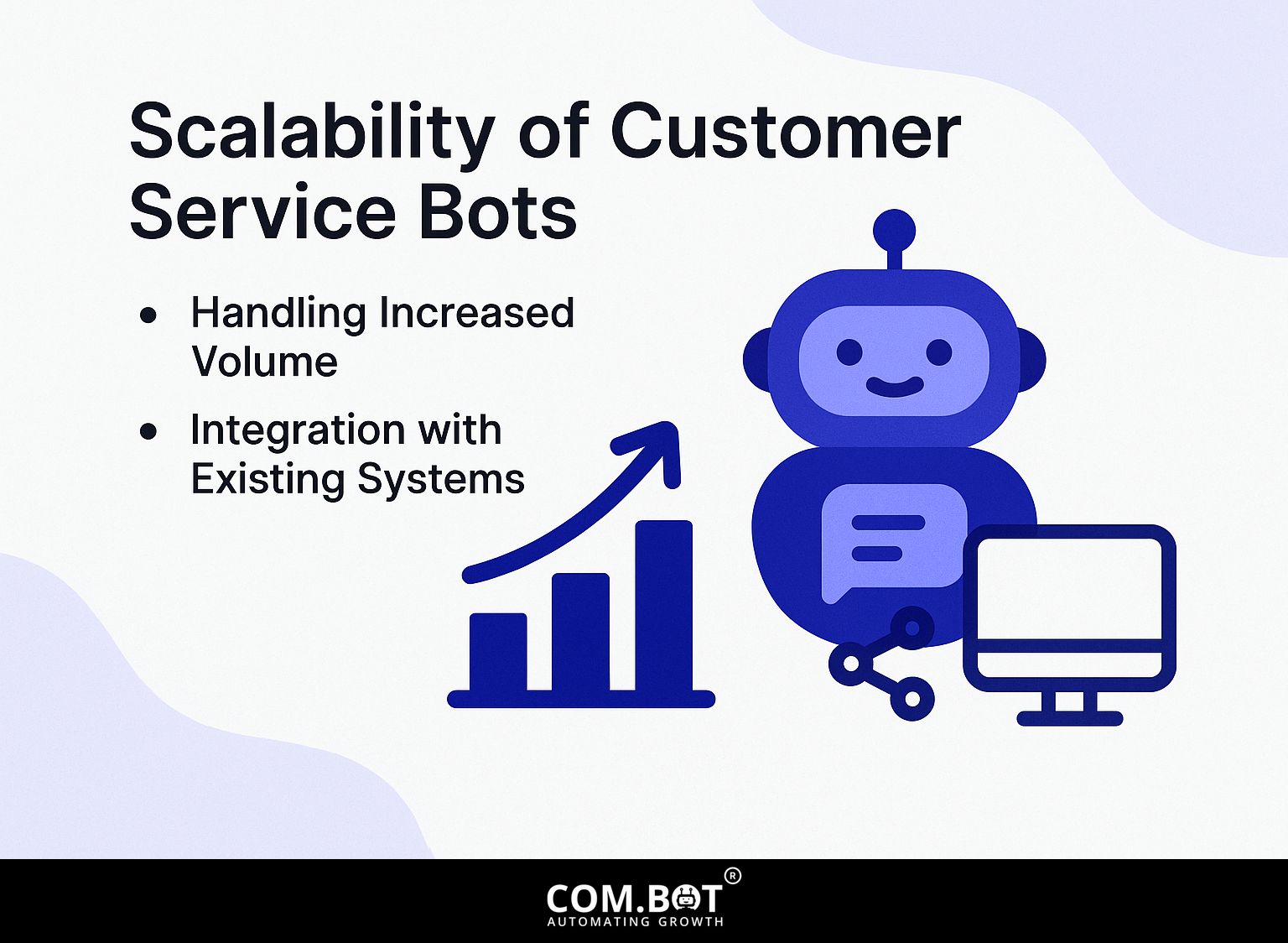
WhatsApp customer service bots help businesses handle more questions quickly while keeping service quality high. Curious about how AI bots manage high volume with scalability and efficiency? Our analysis explains the key factors.
1. Handling Increased Volume
Bots can manage thousands of customer inquiries simultaneously, ensuring that businesses can handle peak loads effectively.
- To implement WhatsApp bots, start by defining their roles: automating FAQs, processing orders, or providing support.
- Tools like Twilio and Chatfuel make it easy to create bots, letting you design chat processes that fit what customers want.
- For example, you can create an automatic reply for questions about order status, which lets human agents handle more difficult problems.
- Make sure your bot works well with your CRM to provide the same experience for users.
- Regularly check interactions to improve the bot’s performance and change responses based on what customers say.
2. Integration with Existing Systems
WhatsApp bots can seamlessly connect with existing customer relationship management (CRM) systems, such as HubSpot, enhancing overall operational performance.
To connect a WhatsApp bot with HubSpot, begin by using a service like Twilio to create your bot. Next, access HubSpot’s API to retrieve customer data. Through webhook integration, you can program the bot to respond to customer inquiries in real-time by fetching information directly from HubSpot.
For instance, if a customer asks about their order status, the bot can use the CRM data to provide an immediate update. This step-by-step setup significantly improves response times and customer satisfaction.
Best Practices for Implementing Bots
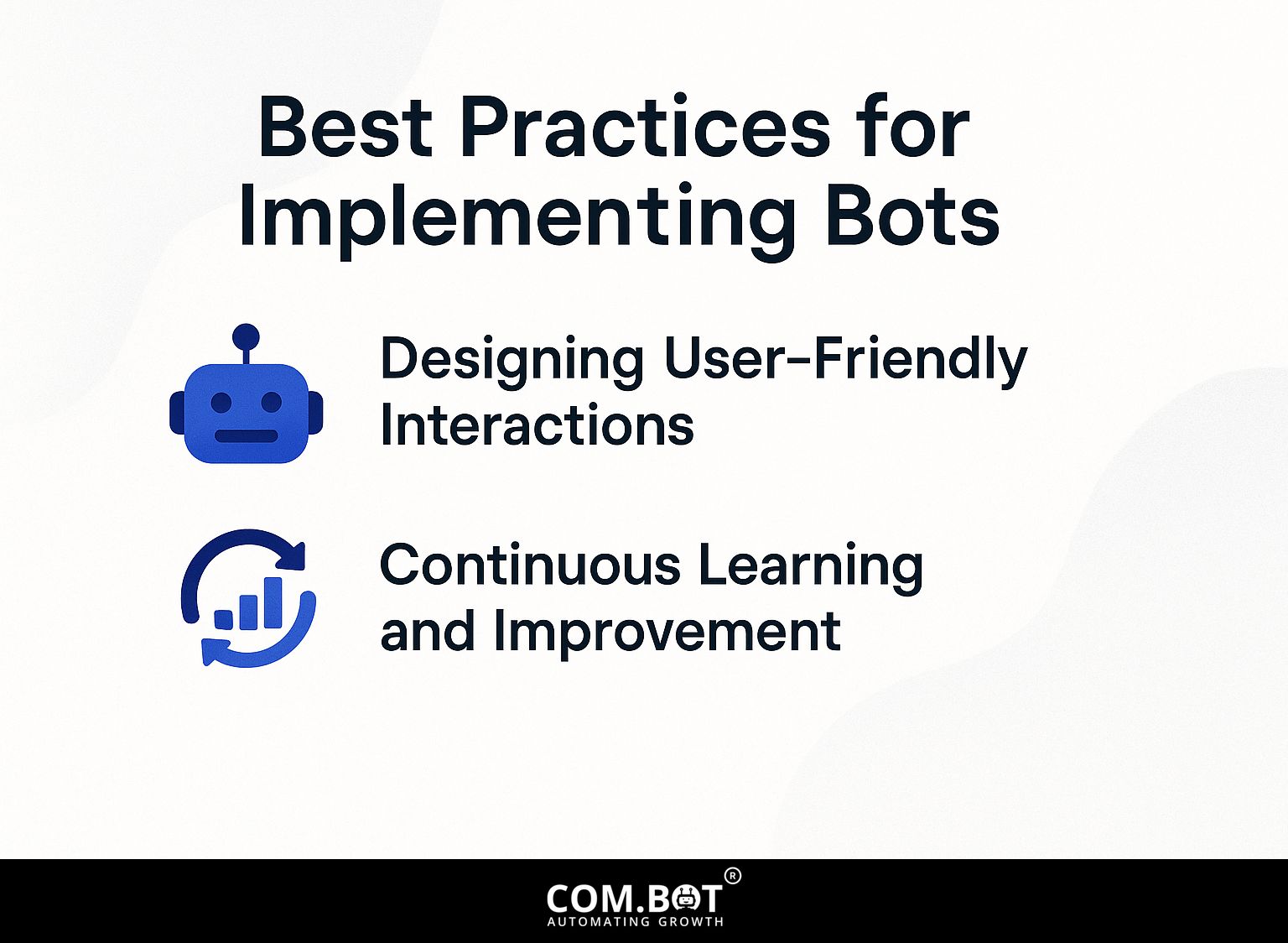
For effective customer service bots on WhatsApp, companies should make sure interactions are easy for users and consistently improve their features.
1. Designing User-Friendly Interactions
Creating user-friendly interactions needs simple communication and easy design, so users can move through bot chats with ease. To achieve this, implement flowcharts for guiding users through common queries, like FAQs or troubleshooting steps.
For example, a simple flowchart might start with “What do you need help with?” leading users to topics like account issues or product details.
Use visual examples of user interfaces that highlight clear buttons and responsive design. Consider tools like Sketch or Figma to prototype these interactions, allowing for user testing before launch. This repeated method improves usability and increases user satisfaction.
2. Continuous Learning and Improvement
To keep working well, WhatsApp bots should use feedback methods to keep learning and improving. One effective method is to implement a feedback loop strategy. Start by collecting user feedback through surveys or direct interactions within the chat. For a deeper understanding of these methods, you might find our expert opinion on AI feedback systems helpful.
Use tools like SurveyMonkey or Google Forms to get structured responses. Next, monitor performance with analytics tools like Google Analytics or WhatsApp Business API data, which can show details like user engagement and message success.
Regularly analyze this data to identify trends and areas for improvement, enabling your bot to evolve and better meet user expectations.
Challenges and Considerations
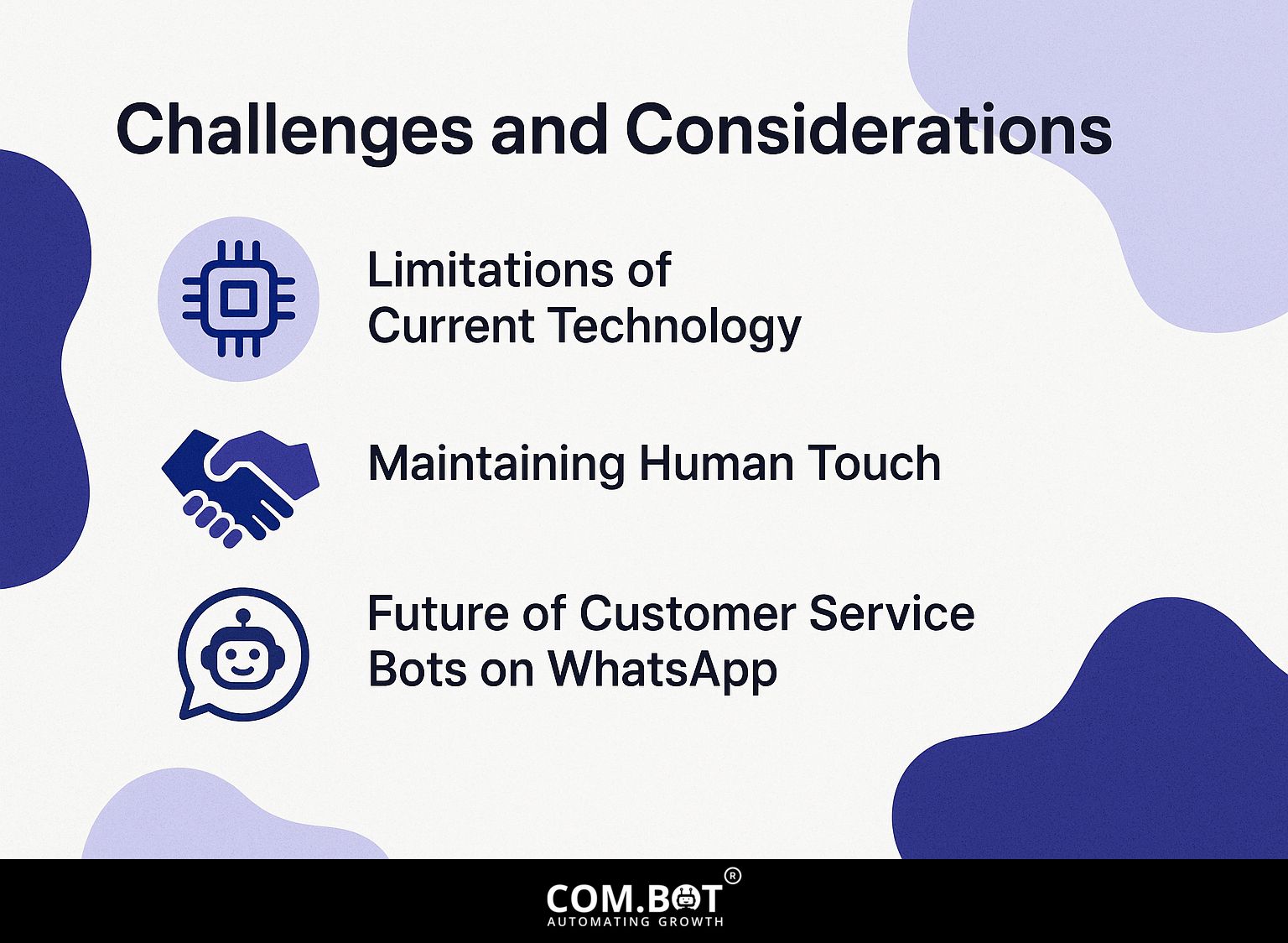
Using customer service bots on WhatsApp has advantages, but companies face difficulties that they need to handle to keep service standards high.
1. Limitations of Current Technology
Current chatbot technology can struggle with complex queries, often leading to frustrated customers and decreased satisfaction.
To improve chatbot performance, businesses can use advanced natural language processing (NLP) tools such as Google Cloud Natural Language or Microsoft Azure Text Analytics.
For instance, HealthPlus Clinics upgraded its chatbot capabilities to effectively understand and respond to medical inquiries, which significantly improved customer satisfaction scores.
Integrating feedback loops allows chatbots to learn from past interactions, refining their responses over time. Combining NLP tools with user feedback can significantly improve customer interactions, making communication easier and more useful.
2. Maintaining Human Touch
Maintaining a personal touch in automated customer chats is important for user satisfaction and loyalty. To make sure human agents work well in your support system, start by finding out when automated tasks need to be handed over to them.
For example, use chatbots to handle simple questions, but set them to alert a real person for complicated matters, like billing disagreements or technical issues.
Tools such as Zendesk or Freshdesk allow seamless transitions from bot to human. Studies, like those from eBay, indicate that this combined approach can cut customer wait times in half, greatly improving the overall experience and increasing retention rates.
3. Prospects for Customer Service Bots on WhatsApp
As AI technology improves, new WhatsApp bots will provide more customized interactions, changing customer service even more.
Expect advancements such as predictive analytics that anticipate customer needs before they even articulate them. Connecting CRM systems with bots lets them review past user interactions and give personalized suggestions.
Improved user data will help bots learn how people engage, making conversations more relevant and useful. Programs like Dialogflow or Microsoft Bot Framework are expected to be key in these developments, making it easier to link technology across various platforms and making customer service better.
Frequently Asked Questions
1. What are customer service bots on WhatsApp?
Customer service bots on WhatsApp are programmed chat tools that talk to customers on the WhatsApp messaging app. These bots use artificial intelligence (AI) and natural language processing (NLP) to understand and respond to customer inquiries and requests.
2. What are the advantages of using customer service bots on WhatsApp?
Using customer service bots on WhatsApp has many benefits. These include 24/7 availability, quick response times, reduced wait times for customers, and cost savings for businesses. Bots can manage several conversations at once, offering quick and reliable customer service.
3. How do customer service bots on WhatsApp improve scalability?
Customer service bots on WhatsApp can improve scalability by handling a large volume of customer inquiries and requests without the need for human intervention. This allows businesses to scale their customer service operations without having to hire additional staff, saving time and resources.
4. Can customer service bots on WhatsApp handle complex customer interactions?
Yes, customer service bots on WhatsApp are capable of handling complex customer interactions. They are equipped with advanced AI and NLP technology that allows them to understand and respond to customers in a human-like manner. Bots can learn and get better at dealing with difficult questions as they gain more experience.
5. Are there any limitations to customer service bots on WhatsApp?
While customer service bots on WhatsApp are highly efficient, there are some limitations. They may not be able to handle highly sensitive or emotional interactions that require human empathy. Bots may find it hard to handle and reply to some dialects or languages, which can reduce their effectiveness in global markets.
6. How can businesses integrate customer service bots on WhatsApp into their operations?
Businesses can integrate customer service bots on WhatsApp into their operations by using third-party bot-building platforms or by developing their own custom bots. They can then connect the bot to their WhatsApp Business account to start interacting with customers. Alternatively, businesses can also hire a chatbot service provider to build and manage their customer service bot on WhatsApp.
